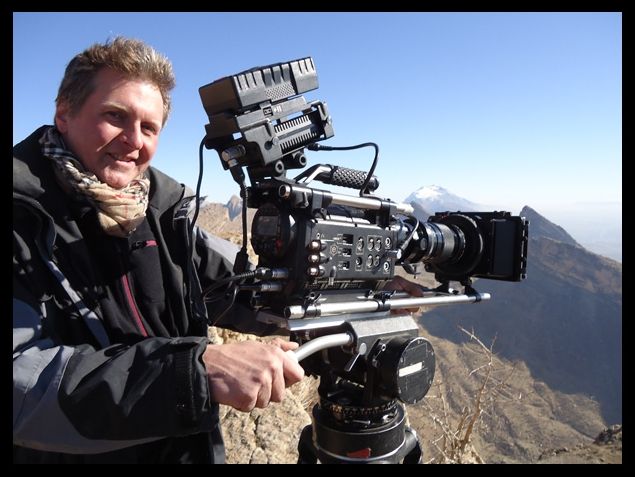As part of our expert tips for making better video calls for Skype Up Your Life week on Pocket-lint, today is the day of that most fundamental piece of equipment that is your webcam. More specifically, we need to uncover some basic skills when it comes to how to use it properly.
What better way to learn about camera work than from a professional cinematographer? So we had a chat with veteran director of photography Nicolas Schroeder. Nic’s online CV and website is littered with film work on all sorts of cameras and formats. Most recently he’s been working on the feature film AB Negative starring 300, Troy and Snow White and the Huntsman actor Vincent Regan. This is Nic’s basic advice for anyone looking to get more from a camera for video calls.
Don’t sit too close
The first, and very easy to accomplish, tip from Schroeder is to sit a little further back from your webcam than you might ordinarily. With many of us conducting video calls from a laptop, the natural position to assume might well be less than a foot from the camera and that can affect the picture.

“Everything needs to be in focus from the foreground to the background, so most webcams use a wide-angle lens but that brings in some other problems. With a wide-angle lens, it tends to distort lines when you start getting close to the camera. So, if you sit close, it tends to make your face bulge and your nose look like Pinocchio's.”
Not a good idea if you’re trying to look your best then. A general rule might be to push your laptop to the back of your desk or to sit back comfortably in your chair. Obviously, that might give you a worse view of your screen, so make sure to maximise your chat window.
Webcam at eye level
Again, with most webcams buried into the top edge of a laptop, they’re generally lower than we are. The result is that we tend to tilt the screen back to compensate and get our heads into the frame and that means the camera is pointed straight up the nose.

“It’s not the most flattering angle,” jokes Schroeder. “In an ideal world, you’d want to position the camera at your eye level but that might not always be possible. If you’ve got a laptop, then try putting some books underneath it to lift it up before you make your call.”
Get your framing right
Now that you’ve got your camera at eye level and you’ve made sure that your head isn’t so close that it’s blown up like a balloon, the next question is just how much and what part of the frame should you be looking to fill for a normal chat situation.
“A mid-shot somewhere around head and shoulders is going to be about right,” suggests Schroeder. “If you move further away, you’re going to start to lose the personal contact. Obviously, you can go wider if you’re trying to show the person at the other end something specific that requires a full shot.”
To be warned though, just as cutting off heads and feet in stills photography is a no-no, there’s only so much space the subject is supposed to take up in video too. Fortunately, there’s a rough rule of thumb for getting it right.

“Rather than filling the entire frame top to bottom, you want to make sure there’s about 5 per cent of it left above your head.”
One suggestion is to measure it by making sure there’s room for a couple of fingers’ space on top of your head before you hit the top of the frame. As for lateral space, however, it’s pretty much as you’d expect unless you happen to have something really spectacular on the wall behind.
“Right in front is where to be; dead centre. You can try sitting off-centre if there’s a decent background. That might be nice but don’t do it if the rest of the frame is empty. It will look odd and as if someone’s about to sit down next to you at any minute.”
External webcam is probably better
If you’ve got the choice, or you want to buy one, then an external webcam is probably going to be better. The lens and chips should be superior to something that needs to be squeezed into a laptop screen but, more to the point, it gives you the flexibility to move it around so that you can achieve the positions suggested in the tips above.

Other advantages of top-end models are features such as autofocus, noise cancelling microphones and higher frame rates to stop motion becoming blurred. High resolution is also another big sell but they do come with a warning, according to Schroeder.
“The pixel count is nice but there’s an increased bit-depth that you’ve then got to process and send down your internet connection while receiving video coming back the other way. That’s fine, so long as you’ve got a decent internet package, otherwise it could ruin the call.”
Lighting
The final tip from our director of photography is to take things one step beyond the camera itself and think about lighting.
“Very often people have a light source in the shot which sends the camera crazy and blows out the whole image. The upshot is that the face is going to be very underexposed. Instead, make sure that the light source is off-frame and, if you put it nice and high, it should hide any slight double chin that your subject may have.”

If you want to know more about lighting for video calls or for film in general then take a look at out five tips for video calling piece with lighting expert, filmmaker James Cronin.

